Sara Björk
Forest Parameter Prediction by Multiobjective Deep Learning of Regression Models Trained with Pseudo-Target Imputation
Jun 19, 2023Abstract:In prediction of forest parameters with data from remote sensing (RS), regression models have traditionally been trained on a small sample of ground reference data. This paper proposes to impute this sample of true prediction targets with data from an existing RS-based prediction map that we consider as pseudo-targets. This substantially increases the amount of target training data and leverages the use of deep learning (DL) for semi-supervised regression modelling. We use prediction maps constructed from airborne laser scanning (ALS) data to provide accurate pseudo-targets and free data from Sentinel-1's C-band synthetic aperture radar (SAR) as regressors. A modified U-Net architecture is adapted with a selection of different training objectives. We demonstrate that when a judicious combination of loss functions is used, the semi-supervised imputation strategy produces results that surpass traditional ALS-based regression models, even though \sen data are considered as inferior for forest monitoring. These results are consistent for experiments on above-ground biomass prediction in Tanzania and stem volume prediction in Norway, representing a diversity in parameters and forest types that emphasises the robustness of the approach.
Simpler is better: spectral regularization and up-sampling techniques for variational autoencoders
Jan 19, 2022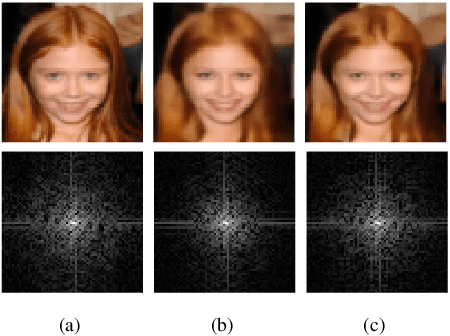
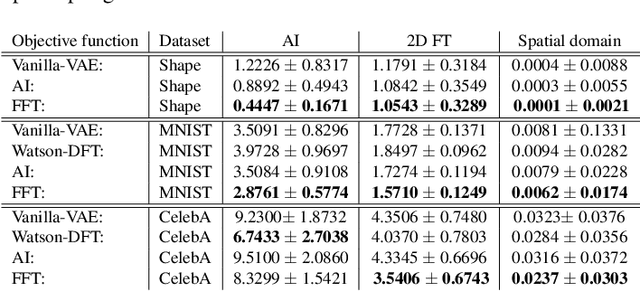
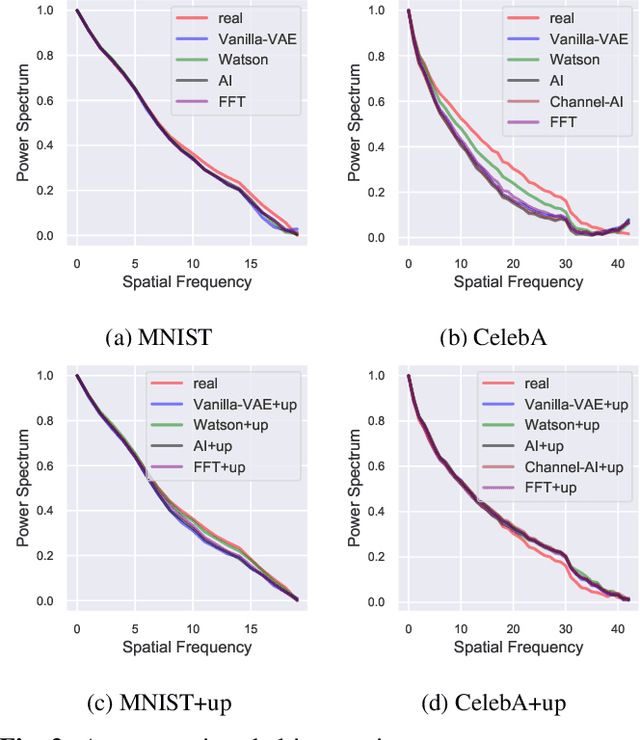
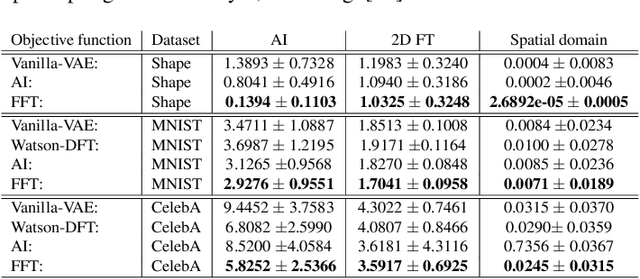
Abstract:Full characterization of the spectral behavior of generative models based on neural networks remains an open issue. Recent research has focused heavily on generative adversarial networks and the high-frequency discrepancies between real and generated images. The current solution to avoid this is to either replace transposed convolutions with bilinear up-sampling or add a spectral regularization term in the generator. It is well known that Variational Autoencoders (VAEs) also suffer from these issues. In this work, we propose a simple 2D Fourier transform-based spectral regularization loss for the VAE and show that it can achieve results equal to, or better than, the current state-of-the-art in frequency-aware losses for generative models. In addition, we experiment with altering the up-sampling procedure in the generator network and investigate how it influences the spectral performance of the model. We include experiments on synthetic and real data sets to demonstrate our results.
Constructing Forest Biomass Prediction Maps from Radar Backscatter by Sequential Regression with a Conditional Generative Adversarial Network
Jun 21, 2021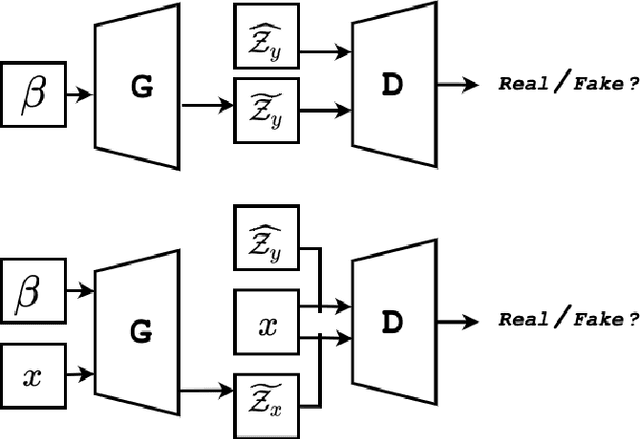
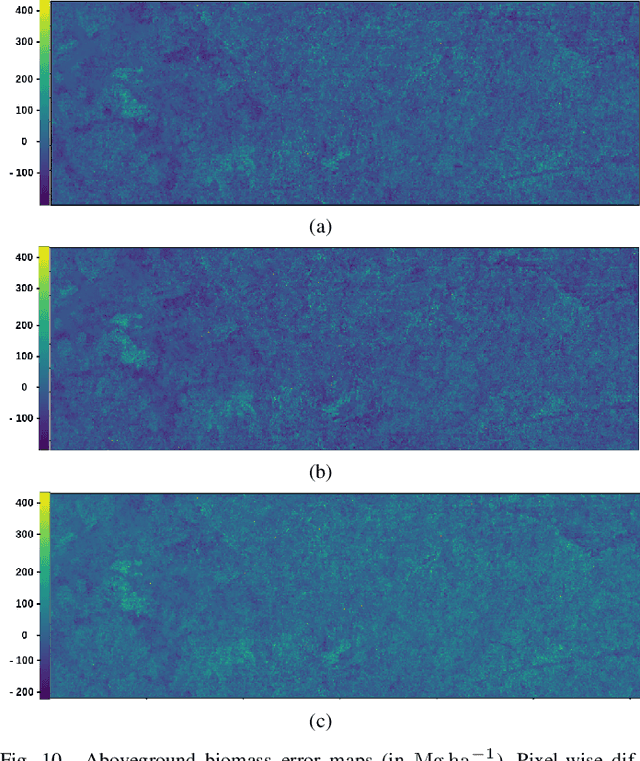
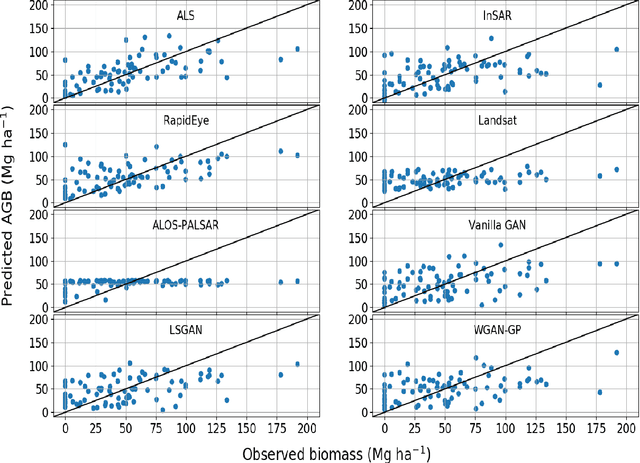

Abstract:This paper studies construction of above-ground biomass (AGB) prediction maps from synthetic aperture radar (SAR) intensity images. The purpose is to improve traditional regression models based on SAR intensity, trained with a limited amount of AGB in situ measurements. Although it is costly to collect, data from airborne laser scanning (ALS) sensors are highly correlated with AGB. Therefore, we propose using AGB predictions based on ALS data as surrogate response variables for SAR data in a sequential modelling fashion. This increases the amount of training data dramatically. To model the regression function between SAR intensity and ALS-predicted AGB we propose to utilise a conditional generative adversarial network (cGAN), i.e. the Pix2Pix convolutional neural network. This enables the recreation of existing ALS-based AGB prediction maps. The generated synthesised ALS-based AGB predictions are evaluated qualitatively and quantitatively against ALS-based AGB predictions retrieved from a traditional non-sequential regression model trained in the same area. Results show that the proposed architecture manages to capture characteristics of the actual data. This suggests that the use of ALS-guided generative models is a promising avenue for AGB prediction from SAR intensity. Further research on this area has the potential of providing both large-scale and low-cost predictions of AGB.
Decision Support Systems in Fisheries and Aquaculture: A systematic review
Nov 25, 2016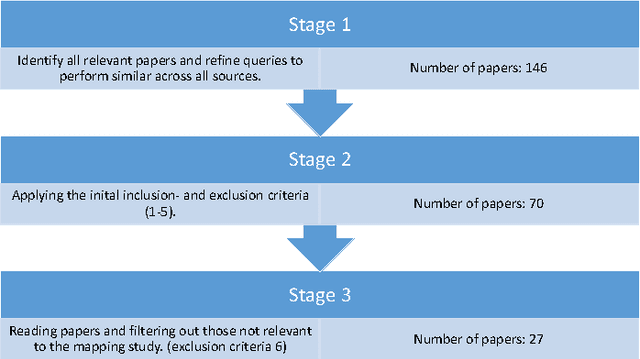



Abstract:Decision support systems help decision makers make better decisions in the face of complex decision problems (e.g. investment or policy decisions). Fisheries and Aquaculture is a domain where decision makers face such decisions since they involve factors from many different scientific fields. No systematic overview of literature describing decision support systems and their application in fisheries and aquaculture has been conducted. This paper summarizes scientific literature that describes decision support systems applied to the domain of Fisheries and Aquaculture. We use an established systematic mapping survey method to conduct our literature mapping. Our research questions are: What decision support systems for fisheries and aquaculture exists? What are the most investigated fishery and aquaculture decision support systems topics and how have these changed over time? Do any current DSS for fisheries provide real- time analytics? Do DSSes in Fisheries and Aquaculture build their models using machine learning done on captured and grounded data? The paper then detail how we employ the systematic mapping method in answering these questions. This results in 27 papers being identified as relevant and gives an exposition on the primary methods concluded in the study for designing a decision support system. We provide an analysis of the research done in the studies collected. We discovered that most literature does not consider multiple aspects for multiple stakeholders in their work. In addition we observed that little or no work has been done with real-time analysis in these decision support systems.
 Add to Chrome
Add to Chrome Add to Firefox
Add to Firefox Add to Edge
Add to Edge